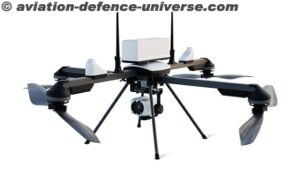The iMUGS consortium, led by Milrem Robotics and composed of several major European defence, communication and cybersecurity companies and high technology SMEs, successfully completed and delivered the project to the European Commission.
The consortium, that started work on the 32,6 MEUR integrated Modular Unmanned Ground System (iMUGS) project in late 2020, completed all the contractual activities and tasks, reaching the operative and technical objectives in May 2023.
“This project set a great example of cooperation and high-level results which we can expect also from coming European Defence Fund Projects. On behalf of the participated Member States, I would like to thank the Coordinator, Milrem Robotics, and all the industry partners involved for making this happen,“ said Martin Jõesaar, iMUGS project officer in the Estonian Centre for Defence Investments.
“The completion of iMUGS is a huge milestone for all involved parties. It is also a testimony that cooperation within 7 European Member States and between 13 different companies and organizations, in no way a simple task, is possible when working towards a worthy goal – strengthening the defence capabilities of the Union,” said Kuldar Väärsi, CEO of Milrem Robotics.
iMUGS created a European-wide architecture for ground and aerial platforms, command, control, and communication equipment, sensors, payloads, and algorithms. The project addressed challenges for interoperability, perception, and decision-making.
Progress was shown in periodic events arranged at all participating Member States consisting of Estonia, Latvia, Finland, Belgium, France, Germany, and Spain. “During iMUGS the consortium demonstrated that unmanned systems play a crucial role in military environments and scenarios, paving the way for wider adoption and use of these systems in the near future,” Väärsi added.
As a result of the project and the technology developed, the European Union will have a pathway for improved ability to respond to emerging military threats and challenges. iMUGS and its envisaged follow-up and peer projects will increase the efficiency and effectiveness of EU military operations through improved coordination of multiple assets and resilient collaboration between manned units and unmanned systems benefiting from digital communications.
The systems developed will improve situational awareness, leading to faster and more accurate decision-making for increased mission success rates and increased overall safety of military operations.
“The project also improved EUs competitiveness and reputation as an expert and innovator in the field of unmanned systems,” Väärsi said.
iMUGS was a 13-party collaboration focused on developing a modular and scalable architecture for hybrid manned-unmanned systems. The parties involved are Milrem Robotics (project coordinator), Latvijas Mobilais Telefons (LMT), Talgen Cybersecurity, Safran Electronics & Defense, NEXTER Systems, Krauss-Maffei Wegmann, Diehl Defence, Bittium, Insta Advance, SOL1, dotOcean, GMV Aerospace and Defence, and the Royal Military Academy of Belgium.
courtesy: Milrem Robotics































































































































